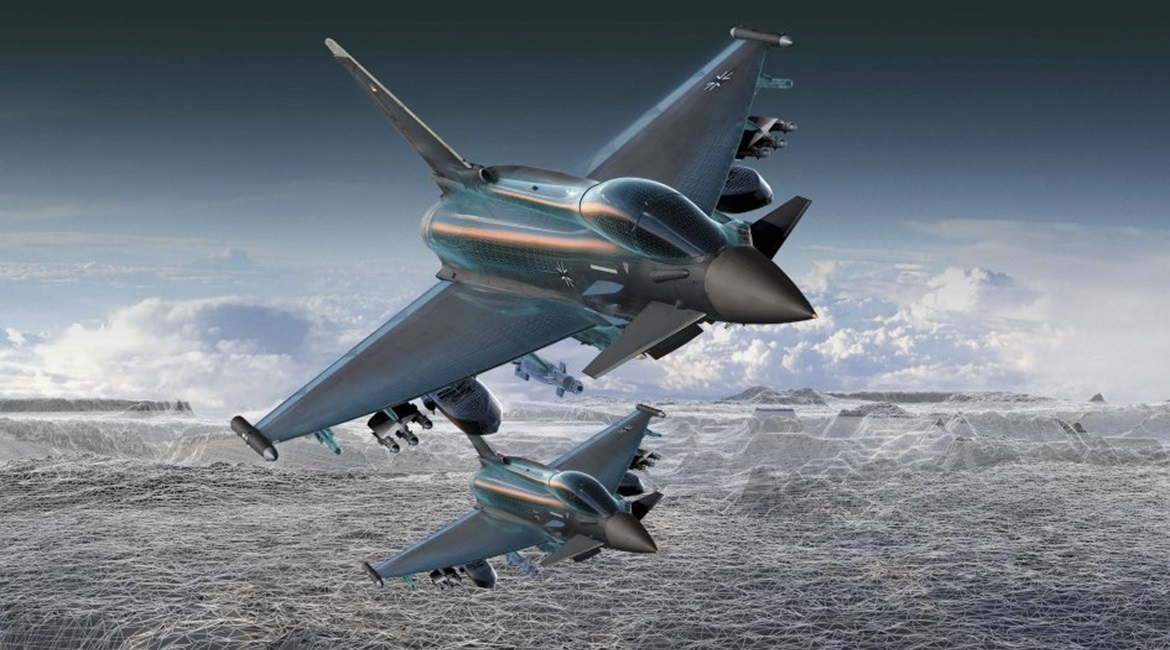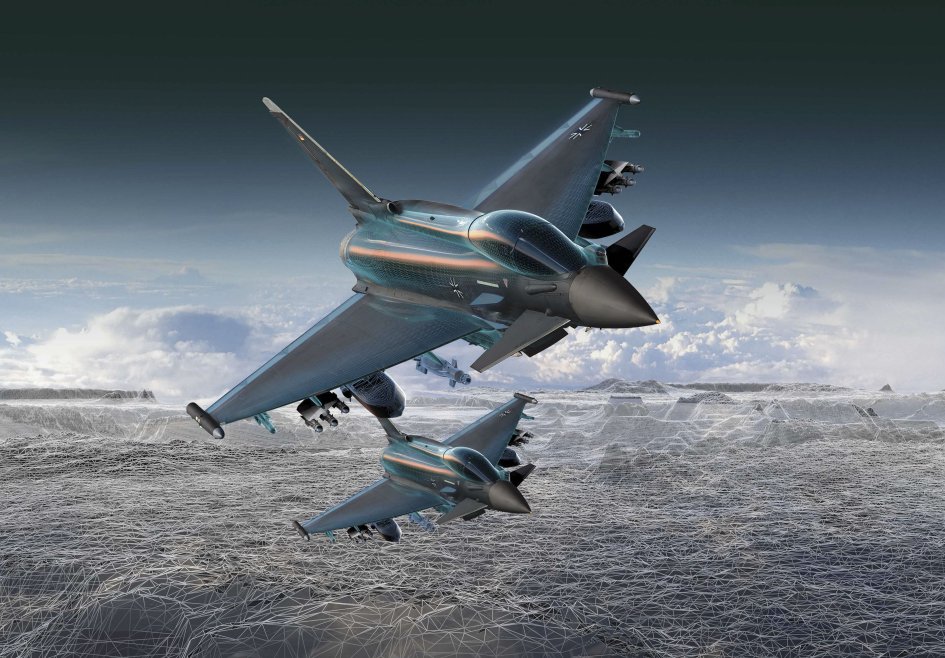
Eurofighter has agreed with the NATO Eurofighter & Tornado Management Agency (NETMA), on behalf of the partner countries, on a long-term capability development plan for the Typhoon combat aircraft that will span the coming decades.

Eurofighter has launched a study to look at improving the capabilities of the Typhoon beyond the current round of performance enhancement packages. (Eurofighter)
Announced at the Paris Air Show on 19 June, which is being held from 17 to 23 June, the Long-Term Evolution (LTE) plan aims to take the Typhoon’s capabilities out to beyond the performance enhancement (PE) packages that are being rolled out across the partner countries of Germany, Italy, Spain, and the UK.
An initial EUR53.7 million (USD60.2 million) study contract will comprise 19 months for the aircraft and 9 months for the Eurojet EJ200 powerplant. The technology areas being explored include mission system architecture, defensive aids, the human-machine interface (HMI), operational flexibility, and engine performance.
As noted by Eurofighter, for mission system architecture “the LTE will support the generation, transmission, and utilisation of increasing amounts of digital data both on board (via advanced multispectral sensors) and off board (via high-performance tactical datalinks), whilst countering new and emerging threats, including cyber. This will maintain the Eurofighter’s ability to operate in the highly contested and congested future operating environment”.
The Praetorian defensive aids sub-system (DASS) “is looking at potential future defensive aids requirements out to 2050, enabling the Typhoon to cope faster, easier, and more affordably with new requirements to counter threats as they arise in the future”, Eurofighter noted.
Looking to read the full article?
Gain unlimited access to Janes news and more...




